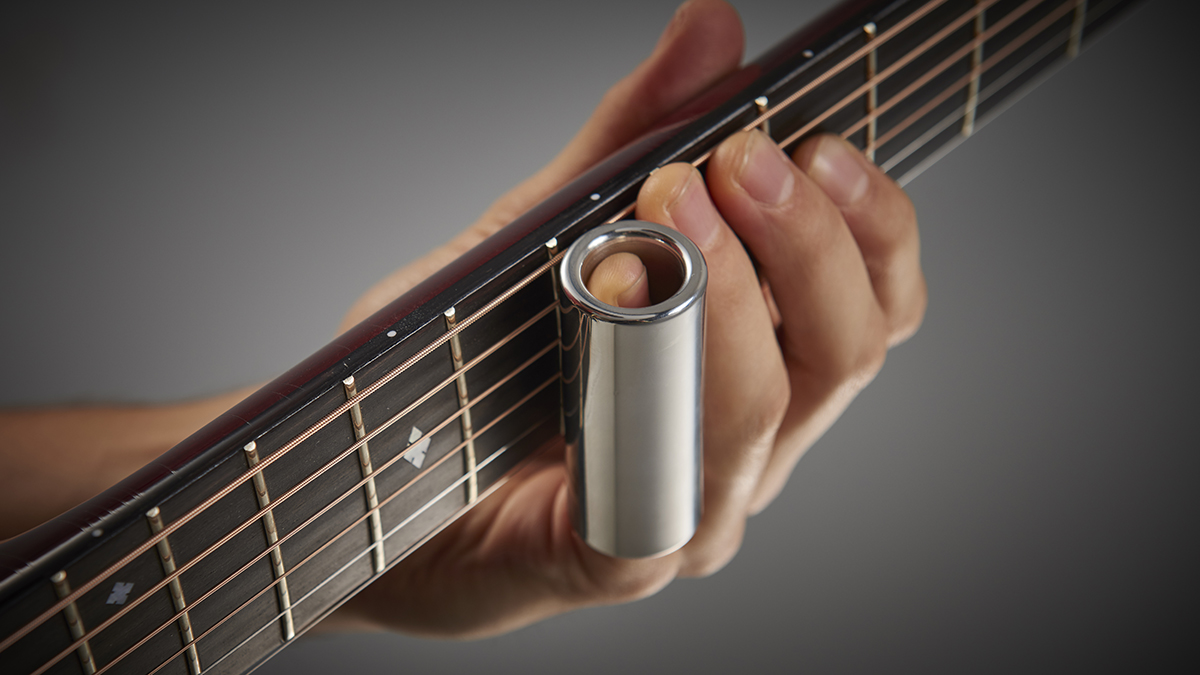Slide guitar is the ultimate test of feel – see if your skills are up to scratch and fine-tune your expressive playing with these genre-hopping licks
Be it bottleneck blues, pop-style melodies or rootsy riffs, slide skills are a must-have for any guitarist. Sharpen yours up with this slide deep-dive

The origins of slide guitar are often traced back to Hawaii, where in the late 19th century, native Joseph Kekuku invented the Hawaiian steel guitar. Kekuku also popularised the use of a steel bar to slide across the strings, often in open tunings.
This technique of using a hard metal object against a string first originated in Africa, with the single-stringed diddley bow. However, it was our man Kekuku who established slide guitar as we know it today.
Fast forward to the early 20th century, and slide guitar was adopted by early blues guitarists from the Mississippi Delta, where bottleneck slide was born. The first slide guitar recording was in 1923 by Sylvester Weaver.
Over the next few decades more and more blues guitarists adopted slide, and during the 1960s, the technique was picked up by rock bands such as The Rolling Stones who were heavily influenced by blues.
In fact, the first rock recording featuring slide was The Stones’ second single, I Wanna Be Your Man, released in 1963. Since then countless guitarists have mastered the technique including Elmore James, Duane Allman, Bonnie Raitt, Jeff Beck, George Harrison, Joe Walsh, Derek Trucks, Sonny and Joey Landreth, Brett Garsed and more.
The actual technique of playing slide is very different to the conventional approach. Rather than pushing the strings down so that they make contact with the frets, the slide lightly presses on the strings but without fretting the note. The fretwire is the contact placement for the best intonation.
There are a number of different materials used to make guitar slides, including steel, brass, ceramic and glass. Glass slides originated from the use of Coricidin medicine bottles, which were Duane Allman’s preferred slide of choice. Each material produces different tones due to their varying masses and weights.
A higher action is also usually preferred, to help keep the strings away from the frets and fretboard. But even this is personal to each player, as some like to switch between slide and regular styles, where a higher action might not be what’s required.
Open tunings are often favoured since they allow chords to be played across one fret using the slide. However, here I’m using standard tuning as favoured by Jeff Beck, Joe Walsh and Brett Garsed. We have five examples for you this month, across a range of styles, with a blues inspired study piece to finish off.
Do experiment with your vibrato and whether to use a plectrum or fingers, as this will help define your voice as a slide guitarist.
Get the tone
Amp settings: Gain 5, Bass 4, Middle 5, Treble 6, Reverb 4
As mentioned in the text, the choice of slide is very personal, so experiment. Single-coils and humbuckers are both commonly used. Distortion, delay and reverb are also great with slide guitar, and a compressor can really help with sustain. I used a glass slide, a bridge humbucker, fairly heavy strings and one clean sound and another with drive and delay.
Slide guitar examples
Example 1. Blues triads
Major triads are outlined here, where all of the notes are played on the same fret. Experiment with the speed in which you slide up to each chord for more expression as well as the intensity of your vibrato. Joe Walsh likes a slow slide and vibrato, whereas Elmore James was more fast and furious.
Example 2. Blues double-stops
This classic blues lick approaches the first note of each beat by a semitone below. Aim for a consistent rhythm and a musical vibrato. George Harrison would often play double-stop harmonies, and of course Elmore’s ‘diddly-diddly-diddly-diddly-dee-dum’ intro is mostly double-stops.
Example 3. Pop-style arpeggios
A G major arpeggio forms the basis of this example with an added C note in the first bar to outline a Gsus4 chord. Aim for accurate intonation so that the guitar is tune with the piano and strings. Derek Trucks and Joey Landreth are both exemplary players of one string slide arpeggios.
Example 4. Indian influence
The Mixolydian mode works great for Indian inspired lines. You can be more experimental with your intonation and how to approach each note for maximum authenticity. Again, Derek Trucks is incredible at this, as of course is Guthrie Govan.
Example 5. Syncopation and wide slides
Slide guitar isn’t always associated with long notes. Some syncopation with rests adds to the rhythmic quality of this example, while the wide intervals show how a slide can be used for a different timbre. Listen to Sonny Landreth to hear all of these approaches in action.
Slide guitar study piece – putting it together
[Bars 1-8] In this section, we alternate between a G major chord up at the 12th and 15th frets, right down to the open position, including a Bb chord for a typical bluesy flavour. Note the slides on the first and last beats of bars 1 and 3. Experiment with your vibrato and how you approach each note.
[Bars 9-20] Here, we take full advantage of the C shape C and D major chords to add chords IV and V to the mix before resolving back to the open G major. These positions are perfect for playing slide guitar in standard tuning
[Bars 21-24] We close the piece by taking the G major chord up an octave with a melodic embellishment at the dusty end of the neck. In bar 22 make sure that the notes are in tune when sliding to and from the top B note.
Slide guitar study piece – backing track
Get The Pick Newsletter
All the latest guitar news, interviews, lessons, reviews, deals and more, direct to your inbox!
Simon is a graduate of the UK's Academy of Contemporary Music and The Guitar Institute, and holds a Masters degree in music. He teaches, examines and plays everything from rock to jazz.








![Joe Bonamassa [left] wears a deep blue suit and polka-dotted shirt and plays his green refin Strat; the late Irish blues legend Rory Gallagher [right] screams and inflicts some punishment on his heavily worn number one Stratocaster.](https://cdn.mos.cms.futurecdn.net/cw28h7UBcTVfTLs7p7eiLe.jpg)


